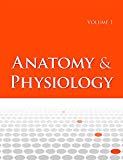Solutions for Anatomy and Physiology by OpenStax
Problem 1ILQ:
View this animation (http://openstaxcollege.org/l/metabolic) to learn more about metabolic...Problem 2ILQ:
Water concentration in the body is critical for proper functioning. A persons body retains very...Problem 3ILQ:
A CT or CAT scan relies on a circling scanner that revolves around the patients body. Watch this...Problem 4ILQ:
A patient undergoing an MRI is surrounded by a tubeshaped scanner. Watch this video...Problem 5ILQ:
PET relies on radioactive substances administered several minutes before the scan. Watch this video...Problem 6RQ:
Which of the following specialties might focus on studying all of the structures of the ankle and...Problem 7RQ:
A scientist wants to study how the body uses foods and fluids during a marathon run. This scientist...Problem 8RQ:
The smallest independently functioning unit of an organism is a(n) ________. cell molecule organ...Problem 9RQ:
A collection of similar tissues that performs a specific function is an ________. organ organelle...Problem 10RQ:
The body system responsible for structural support and movement is the ________. cardiovascular...Problem 11RQ:
Metabolism can be defined as the ________. adjustment by an organism to external or internal changes...Problem 12RQ:
Adenosine triphosphate (ATP) is an important molecule because it ________. is the result of...Problem 13RQ:
Cancer cells can be characterized as generic cells that perform no specialized body function. Thus...Problem 14RQ:
Humans have the most urgent need for a continuous supply of ________. food nitrogen oxygen waterProblem 15RQ:
Which of the following statements about nutrients is true? All classes of nutrients are essential to...Problem 16RQ:
C.J. is stuck in her car during a bitterly cold blizzard. Her body responds to the cold by ________....Problem 17RQ:
After you eat lunch, nerve cells in your stomach respond to the distension (the stimulus) resulting...Problem 18RQ:
Stimulation of the heat-loss center causes ________. blood vessels in the skin to constrict...Problem 19RQ:
Which of the following is an example of a normal physiologic process that uses a positive feedback...Problem 20RQ:
What is the position of the body when it is in the normal anatomical position? The person is prone...Problem 21RQ:
To make a banana split, you halve a banana into two long, thin, right and left sides along the...Problem 22RQ:
The lumbar region is ________. inferior to the gluteal region inferior to the umbilical region...Problem 23RQ:
The heart is within the ________. cranial cavity mediastinum posterior (dorsal) cavity All of the...Problem 24RQ:
In 1901, Wilhelm Rontgen was the first person to win the Nobel Prize for physics. For what discovery...Problem 25RQ:
Which of the following imaging techniques would be best to use to study the uptake of nutrients by...Problem 26RQ:
Which of the following imaging studies can be used most safely during pregnancy? CT scans PET scans...Problem 27RQ:
What are two major disadvantages of MRI scans? release of radiation and poor quality images high...Problem 28CTQ:
Name at least three reasons to study anatomy and physiology.Problem 29CTQ:
For whom would an appreciation of the structural characteristics of the human heart come more...Problem 30CTQ:
Name the six levels of organization of the human body.Problem 31CTQ:
The female ovaries and the male testes are a part of which body system? Can these organs be members...Problem 32CTQ:
Explain why the smell of smoke when you are sitting at a campfire does not trigger alarm, but the...Problem 34CTQ:
When you open a bottle of sparkling water, the carbon dioxide gas in the bottle form bubbles. If the...Problem 35CTQ:
On his midsummer trek through the desert, Josh ran out of water. Why is this particularly dangerous?Problem 36CTQ:
Identify the four components of a negative feedback loop and explain what would happen if secretion...Problem 37CTQ:
What regulatory processes would your body use if you were trapped by a blizzard in an unheated,...Problem 38CTQ:
In which direction would an MRI scanner move to produce sequential images of the body in the frontal...Browse All Chapters of This Textbook
Chapter 1 - An Introduction To The Human BodyChapter 2 - The Chemical Level Of OrganizationChapter 3 - The Cellular Level Of OrganizationChapter 4 - The Tissue Level Of OrganizationChapter 5 - The Integumentary SystemChapter 6 - Bone Tissue And The Skeletal SystemChapter 7 - Axial SkeletonChapter 8 - The Appendicular SkeletonChapter 9 - JointsChapter 10 - Muscle Tissue
Chapter 11 - The Muscular SystemChapter 12 - The Nervous System And Nervous TissueChapter 13 - Anatomy Of The Nervous SystemChapter 14 - The Somatic Nervous SystemChapter 15 - The Autonomic Nervous SystemChapter 16 - The Neurological ExamChapter 17 - The Endocrine SystemChapter 18 - The Cardiovascular System: BloodChapter 19 - The Cardiovascular System: The HeartChapter 20 - The Cardiovascular System: Blood Vessels And CirculationChapter 21 - The Lymphatic And Immune SystemChapter 22 - The Respiratory SystemChapter 23 - The Digestive SystemChapter 24 - Metabolism And NutritionChapter 25 - The Urinary SystemChapter 26 - Fluid, Electrolyte, And Acid-base BalanceChapter 27 - The Reproductive SystemChapter 28 - Development And Inheritance
Sample Solutions for this Textbook
We offer sample solutions for Anatomy and Physiology by OpenStax homework problems. See examples below:
Chapter 1, Problem 1ILQChapter 2, Problem 1ILQChapter 3, Problem 1ILQChapter 4, Problem 1ILQChapter 5, Problem 1ILQChapter 6, Problem 1RQChapter 7, Problem 1ILQChapter 8, Problem 1ILQChapter 9, Problem 1ILQ
Chapter 10, Problem 1ILQChapter 11, Problem 1RQChapter 12, Problem 1ILQChapter 13, Problem 1ILQChapter 14, Problem 1ILQChapter 15, Problem 1ILQChapter 16, Problem 1ILQChapter 17, Problem 1ILQChapter 18, Problem 1ILQChapter 19, Problem 1ILQChapter 20, Problem 1ILQChapter 21, Problem 1ILQChapter 22, Problem 1ILQChapter 23, Problem 1ILQChapter 24, Problem 1RQChapter 25, Problem 1RQChapter 26, Problem 1ILQChapter 27, Problem 1ILQChapter 28, Problem 1ILQ
More Editions of This Book
Corresponding editions of this textbook are also available below:
ANATOMY+PHYSIOLOGY
13th Edition
ISBN: 2810017675928
ANATOMY AND PHYSIOLOGY
17th Edition
ISBN: 9781630180928
Anatomy & Physiology
1st Edition
ISBN: 9781938168130
Anatomy & Physiology
17th Edition
ISBN: 9781947172043
Related Biology Textbooks with Solutions
Still sussing out bartleby
Check out a sample textbook solution.
